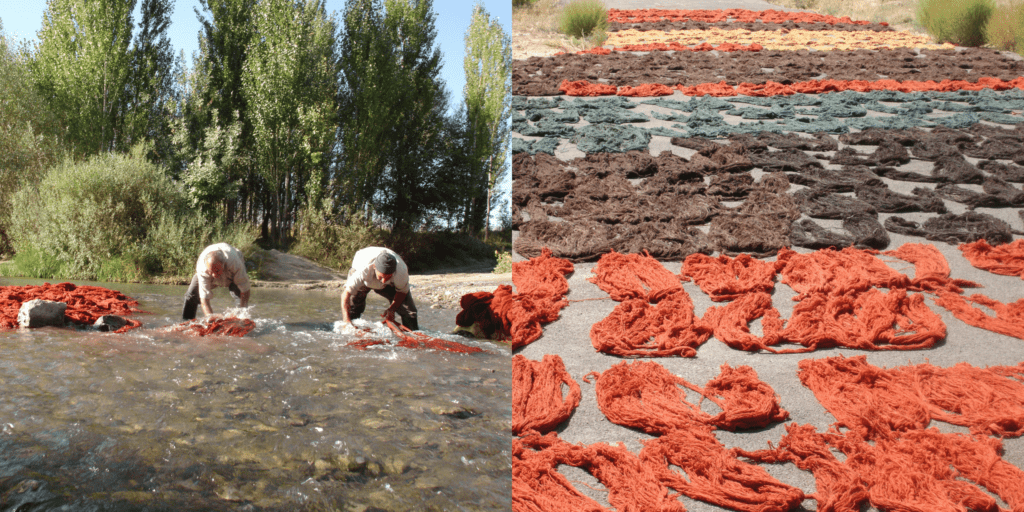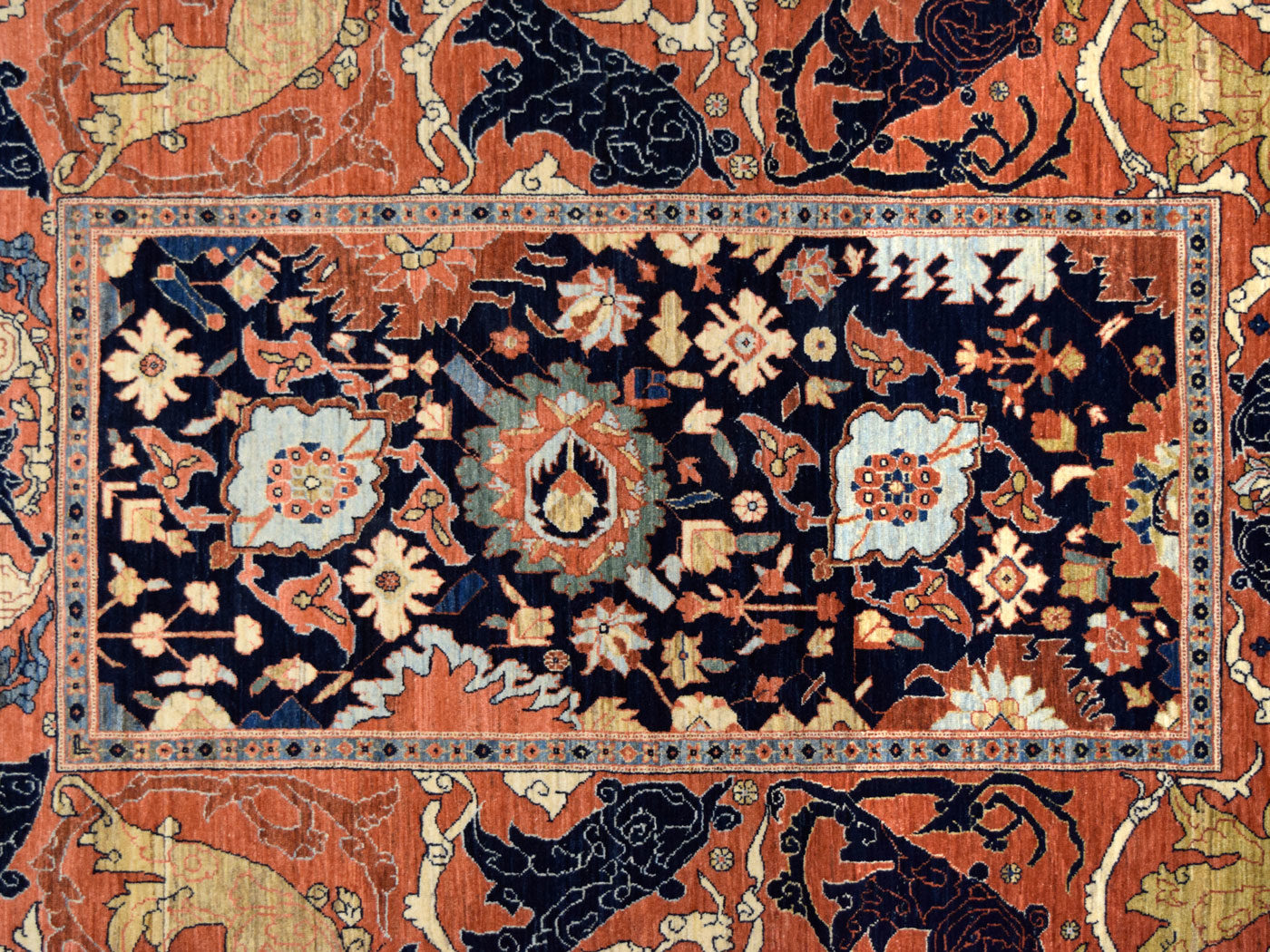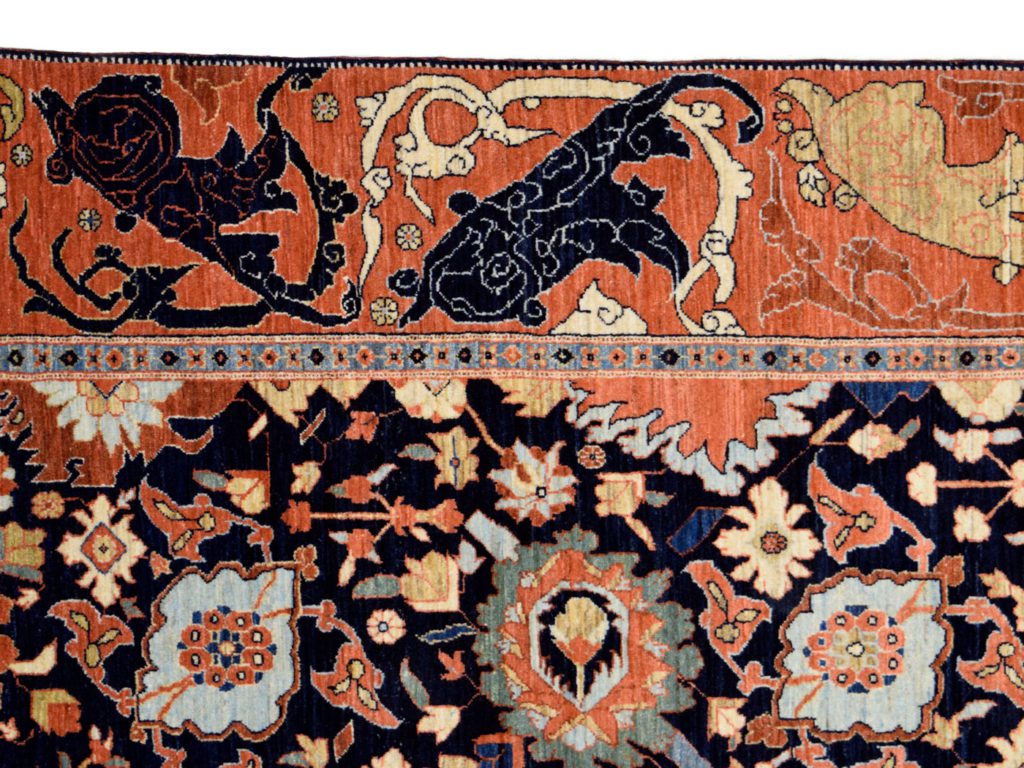Inspiration Everywhere – Transitional Bidjar
Considering most Inspiration Everywhere blogs showcase a fine contemporary carpet, it is time to switch gears and pay homage to the classic Bidjar design. This week, we will cover this warm transitional Bidjar carpet. Continue reading to discover more about this unique carpet’s design, symbolism, and incredible construction.
Sporting warm shades of orange, red, indigo, cream, and taupe wool, this transitional Persian Bidjar carpet is hand-knotted and measures 4’2″ x 6′. Depicting a beautiful garden scene, the carpet possesses unique proportions, with a large exterior border and a small interior field. Like most traditional Bidjar and Persian flower garden designs, the rug does not have a central point of view, allowing viewers to appreciate the design from all angles. Within the interior field, large and small floral motifs, interconnected by curvilinear vines, create a destination for butterfly figures that float through the garden. The rich indigo background makes a perfect platform for the relaxed green, light blue, pink, orange, and gold detailing. The exterior border encapsulates the more tribal interior and provides a romantic and flowing pattern with sweeping leaf motifs. Nouveau-styled designs have depth and detailing done in orange, cream, and indigo, contrasting with the rich orange background of the border. Inspired by fine antique Bidjar carpets that survive today, lead designer Bahram Shabahang and traditional Bidjar weavers selected these traditional motifs for their symbolism.
Within the field, the motif with a green exterior represents an interpretation of a butterfly alongside peonies and carnations, which symbolize wealth and wisdom. Butterflies and flowers hold an essential symbiotic relationship in Persian textiles representing the circle of life: one element needs the other to survive. The exterior border expands upon that symbolism with large leaflike motifs that depict clouds floating above the garden and symbolize immortality. Aside from the subtle messages woven into the pile, what makes this transitional Bidjar special is profound in its traditional creation.
Unlike the machine-made carpets mass-produced today, this Bidjar utilizes a hand-knotted weave called Shekarloo, which is exclusive to Orley Shabahang. It possesses a luxurious softness and is incredibly durable. The Shekarloo weave truly showcases the sophistication of Persian weaving. Before weaving even begins, the spinning team sources the highest quality wool from the neck and back of Persian fat-tailed sheep. This wool possesses high levels of lanolin, which provides the softness and natural stain resistance needed to ensure durability. Once shorn, the spinning team hand-spins wool into yarn. Hand-spinning the fibers re-introduces lanolin back into the yarn and creates the striations within the pile.

After spinning, dye masters utilize only organic vegetable dyes that are non-toxic and provide fade-resistant hues. The yarn is then washed and dried in the sun to set the patina. Following the drying process, weavers finally begin knotting each thread of the pile onto the cotton warp and weft foundation. Most think that this archaic process is excessive, but we know that the traditional system continues to create the finest piece. If you fell in love with this Bidjar’s romantic and near-nouveau style, check out Orley Shabahang’s Transitional collection. And if you still can’t get enough of our carpets, check out our digital showroom at 1stDibs.com to see the rest of our hand-knotted creations!



